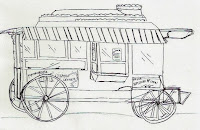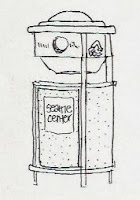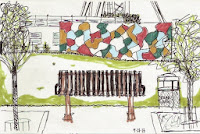On Saturday October 19th, I had the privilege to work on a job site for Habitat for Humanity. Over the eight hour period we had at this job site, we learned how to tie hurricane ties, put on the beginning stages of roofing as well as put up the drip edge, and dug dirt away from the foundation. We hammered nails into pieces of wood that were needed for insulation and other elements that were going into building the house. The men on the job site taught us safety precautions for being on a job site as well as how to properly do these activities.
This experience was very beneficial because as an interior designer, it is very important to understand the underlying concepts of construction in order to design accurately and realistically. Learning about all of the steps that goes into constructing a roof such as the beams, the plywood, the drip edge, etc., is important to know as designers. During my career, I will have to visit the job site that I am designing in which I will need to know the basic structural elements and concepts of construction. It was also helpful to see what a house looks like before it is completely done and finished.


















